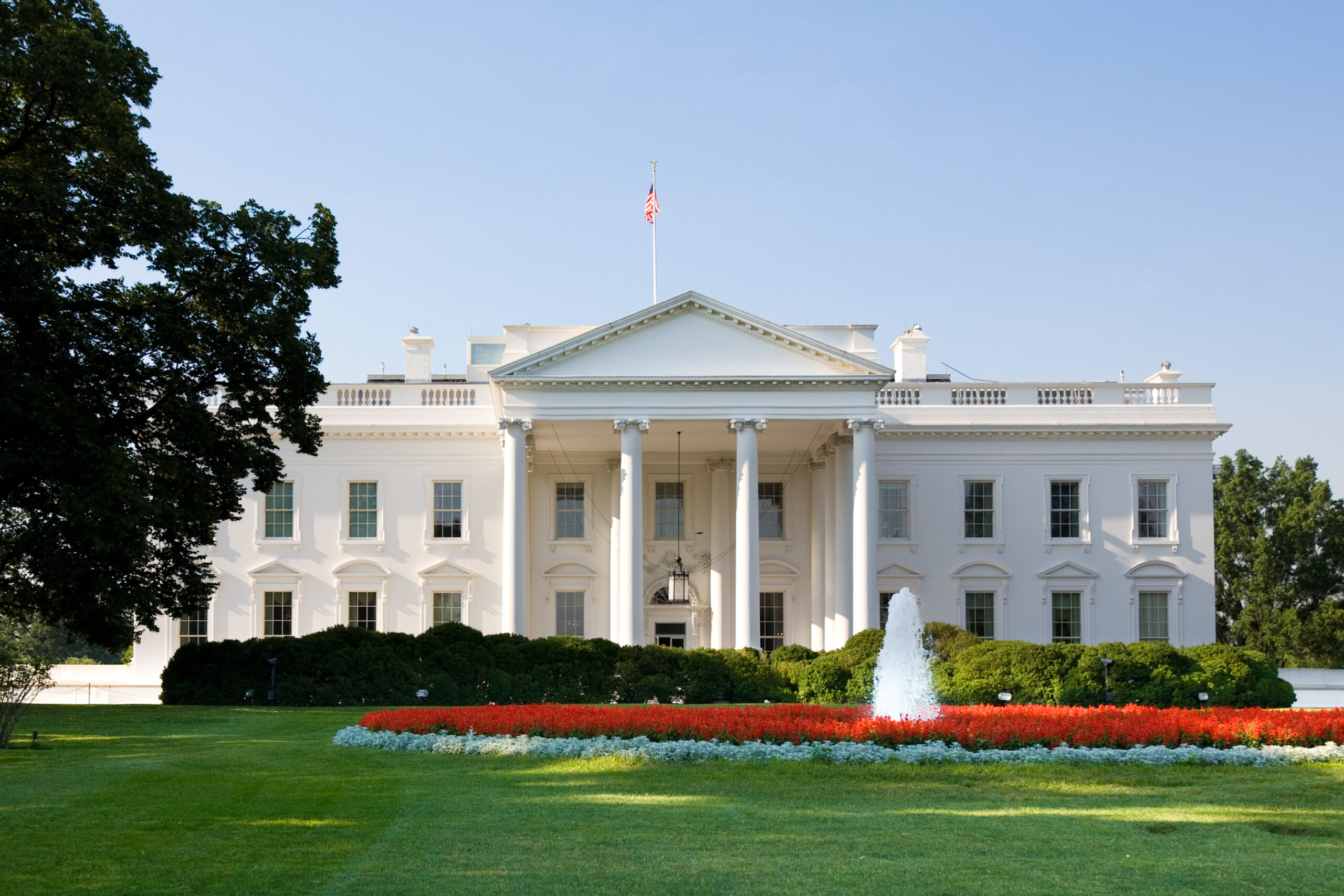The Latest from the White House – An Executive Order in Support of Increased Domestic Production of Federally Funded Inventions
By: Nafsika Karavida
On July 28, 2023, President Biden signed Executive Order “Federal Research and Development in Support of Domestic Manufacturing and United States Jobs,” also known as “Invent it Here, Make it Here.”[1]
The main purpose of the Executive Order (“EO”) is to boost domestic manufacturing of inventions that have been researched and developed in the United States and funded with federal grants when possible. In President Biden’s own words during a speech in Auburn, Maine on Friday, July 28,
“This is how it works: Federal agencies research and fund development to encourage innovation. This executive order dictates that those agencies have to prioritize domestic manufacturing when it comes time to bring those inventions to market.”[2]
The White House stated in its Executive Order Fact Sheet that US workers, researchers, and companies have created “many of the world’s most important technologies,” but that even when these products can be manufactured domestically, they are usually manufactured in other nations.[3] The EO will thus try to shift production of federally funded inventions back overseas to the United States.
The EO tackles four core objectives:
- Improved Transparency and Streamline Reporting Requirements in the Federal R&D Process to Better Track Progress Towards Domestic Manufacturing Goal
The EO seeks to improve the tracking of the lifecycle of technologies developed and commercialized through federal R&D investment. One objective of the EO is therefore to help modernize the government reporting system, iEdison. The enhanced reporting system will give the government a better understanding of how, when and where investments in R&D lead to domestic manufacturing “and the creating of good-paying U.S. jobs,”[4] and “help researchers, companies and the public better understand the innovation landscape in the United States,”[5] To this end, it directs the Department of Commerce to develop contract terms for use by agencies that have invested in R&D. The idea is that the agencies use these terms to “collect data on inventions and their manufacturing locations.”[6] The terms developed by the Department of Commerce will, according to the White House, protect confidential information pertaining to a business while also providing increased visibility into taxpayer-funded investments.
Federal agencies are further encouraged to streamline their reporting requirements in order to reduce the administrative burden on funding recipients and “provide more consistent innovation and commercialization data.”[7] The idea is also that most agencies transition reporting requirements to a single reporting portal, the National Institute of Standards and Technology, iEdison, by the end of 2025.[8] This will centralize reporting for federal R&D funding recipients and their licensees, who will then only use one system to report required information.
Finally, with regard to reporting, tracking and transparency, from July 2025 onwards agencies that make “substantial R&D investments will report annually to the Made in America Director in the Office of Management and Budget on the utilization of inventions developed through their R&D awards, as well as where products using those inventions are being manufactured.”[9]
- Boost the Incentive to Manufacture New Inventions in the United States
The EO encourages agencies to implement domestic manufacturing into their R&D award solicitations. This specifically emphasizes the administration’s preference that inventions that have been funded with taxpayer money will be manufactured in the United States. Agencies are hereto directed to use a “broad range of agency authorities used to purchase or invest in leading-edge technologies” [10] to also manufacture such technology domestically.
- Encourage the Expansion of Domestic Production for Critical Industries
The EO further directs agencies to consider U.S. economic and national security interests, including “whether certain critical or emerging technologies should be produced domestically.”[11] Currently, under the Bayh-Dole Act, domestic manufacturing requirements apply only to third parties who have received an exclusive license to use and sell an invention in the United States. As such, the domestic manufacturing requirement in Bayh-Dole does not apply to an organization with a non-exclusive license, federal funding beneficiaries, or an organization that takes an invention developed with U.S. federal funding to market to sell solely overseas. For critical and emerging technologies, agencies are now encouraged to expand the domestic manufacturing requirement to not just exclusive licensees but other entities. This being said, the EO recognizes the importance of international R&D partnerships “to support supply chain resilience and economic security”[12] and that, naturally, all projects that are federally funded will not be manufactured in the United States.
- Make the Domestic Manufacturing Waiver Process Clearer
To streamline the domestic waiver process and make it clearer, the EO instructs the Department of Commerce to develop a set of waiver questions to be used by all agencies, across the U.S. Government. For example, according to the EO, this set of questions will include “whether there are any potential economic or national security impacts to manufacturing the invention outside the United States; and what benefits will accrue to domestic manufacturing and United States jobs as a result of bringing the invention to market.”[13] For inventions that will be produced abroad, the waiver applicant will be required to “describe the conditions under which the invention will be manufactured abroad, including “unionization of workplaces, health and safety standards, labor and wage laws, and environmental impacts.”[14] The purpose of this is to ensure that federally funded inventions are manufactured “under conditions that are in line with U.S. values when they cannot be manufactured domestically.”[15]
The Executive Order also aims to increase the transparency of the waiver process. To this end, the EO directs the Department of Commerce to develop public guidance on how agencies will approach waiver decisions.
Comment
The Executive Order seems to strike the right balance between encouraging domestic production of federally funded inventions yet acknowledging that not all such inventions can, or should, be manufactured in the United States (for instance, it might not make commercial sense to produce certain products in the US). As one commentator put it:
“The crux of the problem is that in all too many cases, domestic manufacturers simply can’t be found. That’s not something which can be fixed by Executive Order. What we don’t want is an approach that puts more burdens on those seeking to license federally funded inventions or their prospective licensees, because the fault isn’t theirs. So, it’s reassuring that the new Order instructs the head of each agency to consult with outside stakeholders, including the industrial partners, academic institutions and others who will be directly affected by its provisions.”[16]
During the pandemic, not only the United States but much of the world experienced supply chain issues. This Executive Order will of course not, and does not purport to, solve this prolongated issue; however, it says something about where the wind is blowing. The world is changing and for many reasons, environmental reasons included, there is an increasing political will to discontinue certain aspects of globalization. Too much dependency on foreign countries, often countries with dubious human rights records, is being looked upon with increased skepticism. The administration also points out that inventions that exist because of taxpayer money should benefit the American workforce as much as possible – this includes manufacturing jobs and not only the ready-made product. The majority of the American people would likely agree.
 This article is intended as a general discussion of these issues only and is not to be considered legal advice or relied upon. For more information, please contact RPJ Associate Nafsika Karavida who counsels clients on employment, intellectual property, corporate and transactional, and cross-border commercial law. Ms. Karavida is admitted to practice law in Connecticut, New York, Sweden, the European Union, and before the United States Patent and Trademark Office (limited recognition, passed Patent Bar Exam March 2023, admission pending).
This article is intended as a general discussion of these issues only and is not to be considered legal advice or relied upon. For more information, please contact RPJ Associate Nafsika Karavida who counsels clients on employment, intellectual property, corporate and transactional, and cross-border commercial law. Ms. Karavida is admitted to practice law in Connecticut, New York, Sweden, the European Union, and before the United States Patent and Trademark Office (limited recognition, passed Patent Bar Exam March 2023, admission pending).
[1] See https://www.whitehouse.gov/briefing-room/presidential-actions/2023/07/28/executive-order-on-federal-research-and-development-in-support-of-domestic-manufacturing-and-united-states-jobs/
[2] See https://www.meritalk.com/articles/biden-to-sign-executive-order-to-boost-u-s-tech-production/
[3] See https://www.whitehouse.gov/briefing-room/statements-releases/2023/07/28/fact-sheet-amidst-manufacturing-boom-president-biden-will-sign-an-executive-order-on-federal-research-and-development-in-support-of-domestic-manufacturing-and-united-states-jobs-to-encourage/
[4] Id.
[5] Id.
[6] Id.
[7] Id.
[8] Id.
[9] Id.
[10] Id.
[11] Id.
[12] Id.
[13] Id.
[14] Id.
[15] Id.
[16] Biden Executive Order on Domestic Manufacturing of Federally Funded Inventions Hits the Right Notes—But the Devil’s in the Details (ipwatchdog.com)

